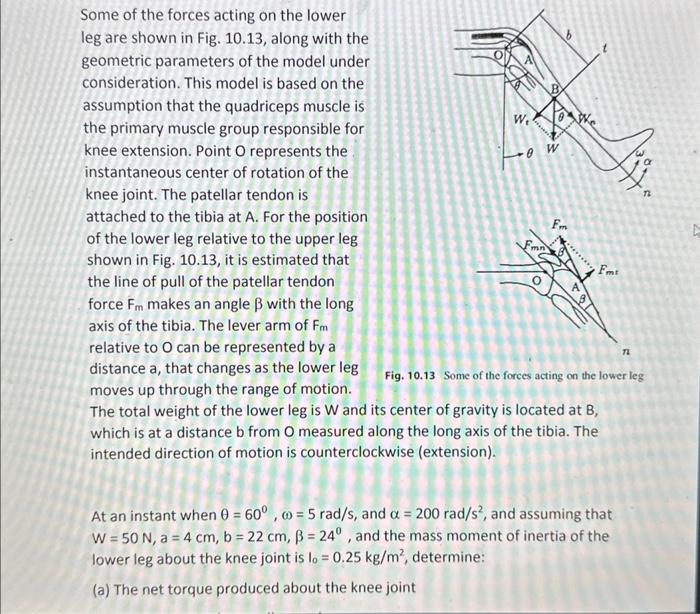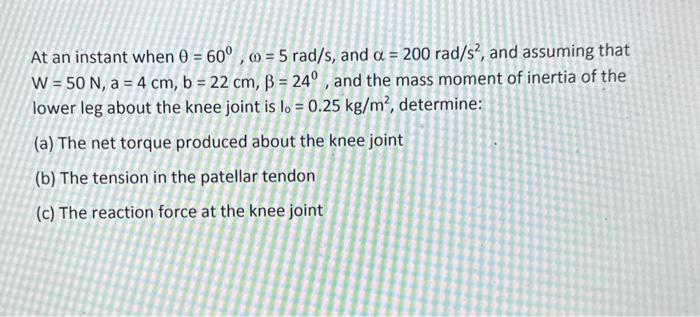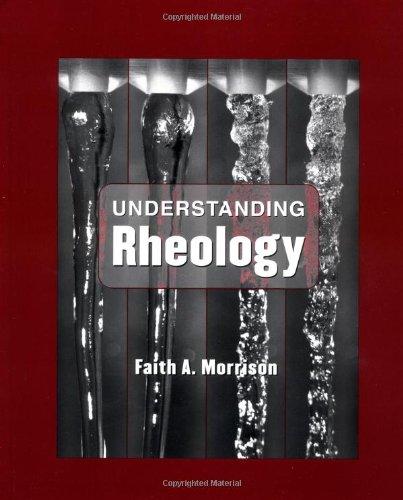Knee Extension - The angular motion of the lower leg about the knee joint, and the forces and torques produced by the muscles crossing the knee joint during knee flexions and extensions have been investigated by a number of researchers utilizing different experimental techniques. One of these techniques is discussed here. Consider the person illustrated in Fig. 10.12. The test subject is sitting on a table, with the back placed against a back rest and the lower legs free to rotate about the knee joint. The subject's torso is strapped to the back rest and the right thigh is strapped firmly to the table. A well-padded sawhorse is placed in front of the subject to prevent hyperextension at the knee joint (not shown in Fig. 10.12). An electrogoniometer is attached to the subject's right leg. The arms of the goniometer are aligned with the estimated long axes of the thigh and shank, and the axis of rotation of the goniometer is aligned with the estimated axis of rotation of the Fig. 10.12 Knee extension knee joint. The subject is then asked to extend the lower leg as rapidly as possible. The signals received from the electrogoniometer's potentiometer are stored in a computer, and are used to calculate the angular displacement of the lower leg as measured from its initial vertical position. Using a finite Some of the forces acting on the lower leg are shown in Fig. 10.13, along with the geometric parameters of the model under consideration. This model is based on the assumption that the quadriceps muscle is the primary muscle group responsible for knee extension. Point O represents the instantaneous center of rotation of the knee joint. The patellar tendon is attached to the tibia at A. For the position of the lower leg relative to the upper leg shown in Fig. 10.13, it is estimated that the line of pull of the patellar tendon force Fm makes an angle with the long axis of the tibia. The lever arm of Fm relative to O can be represented by a distance a, that changes as the lower leg Fig. 10.13 Some of the forces acting on the lower leg moves up through the range of motion. The total weight of the lower leg is W and its center of gravity is located at B, which is at a distance b from O measured along the long axis of the tibia. The intended direction of motion is counterclockwise (extension). At an instant when =60,=5rad/s, and =200rad/s2, and assuming that W=50N,a=4cm,b=22cm,=24, and the mass moment of inertia of the lower leg about the knee joint is I0=0.25kg/m2, determine: (a) The net torque produced about the knee joint At an instant when =60,=5rad/s, and =200rad/s2, and assuming that W=50N,a=4cm,b=22cm,=24, and the mass moment of inertia of the lower leg about the knee joint is I0=0.25kg/m2, determine: (a) The net torque produced about the knee joint (b) The tension in the patellar tendon (c) The reaction force at the knee joint









